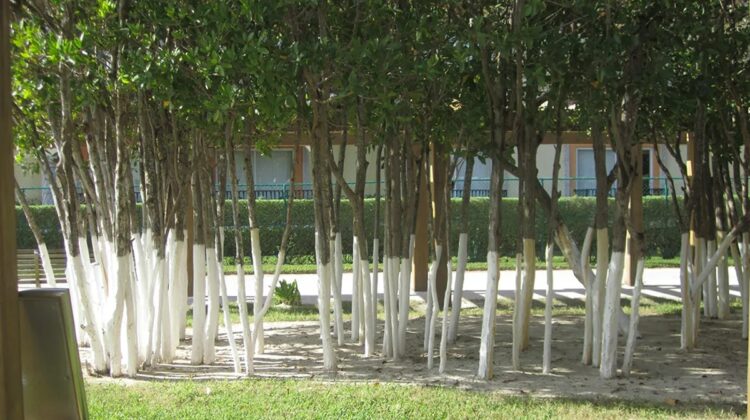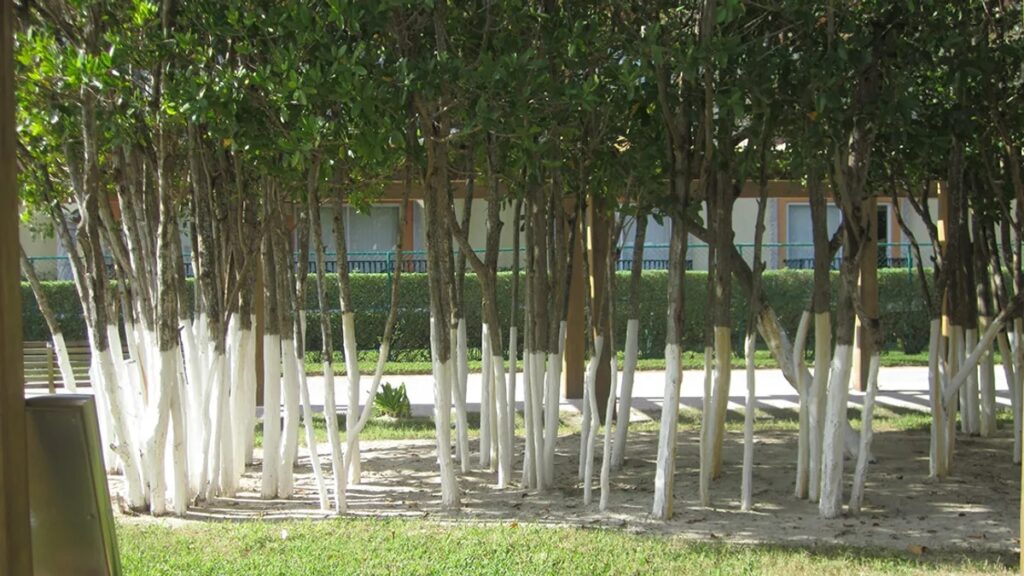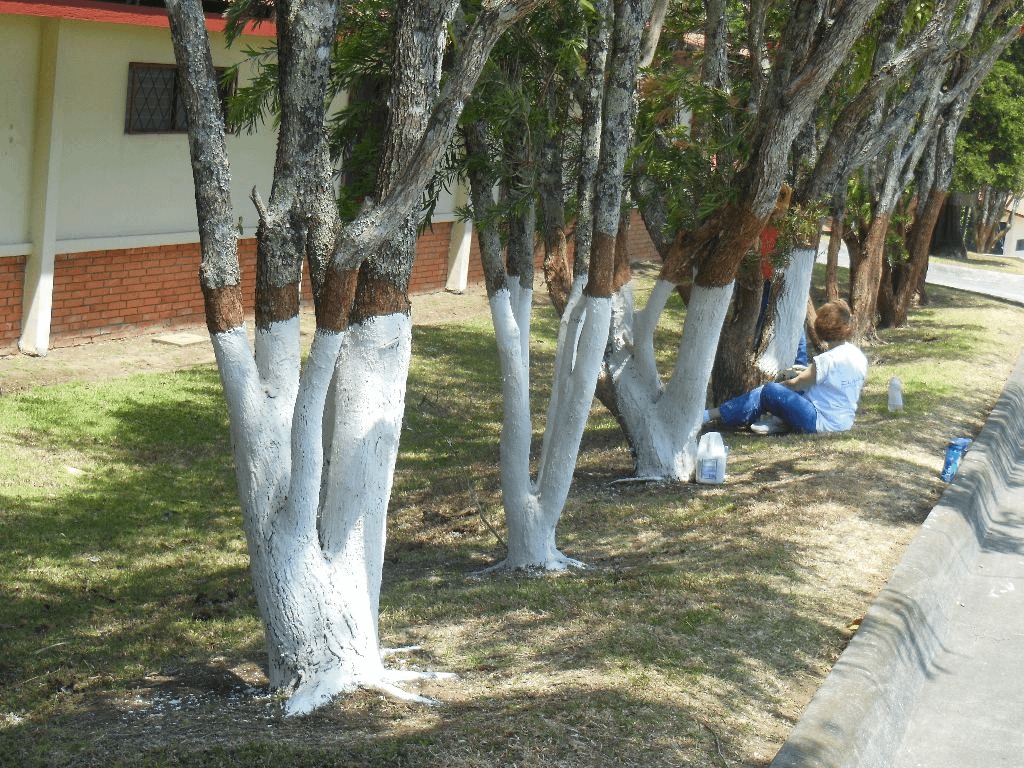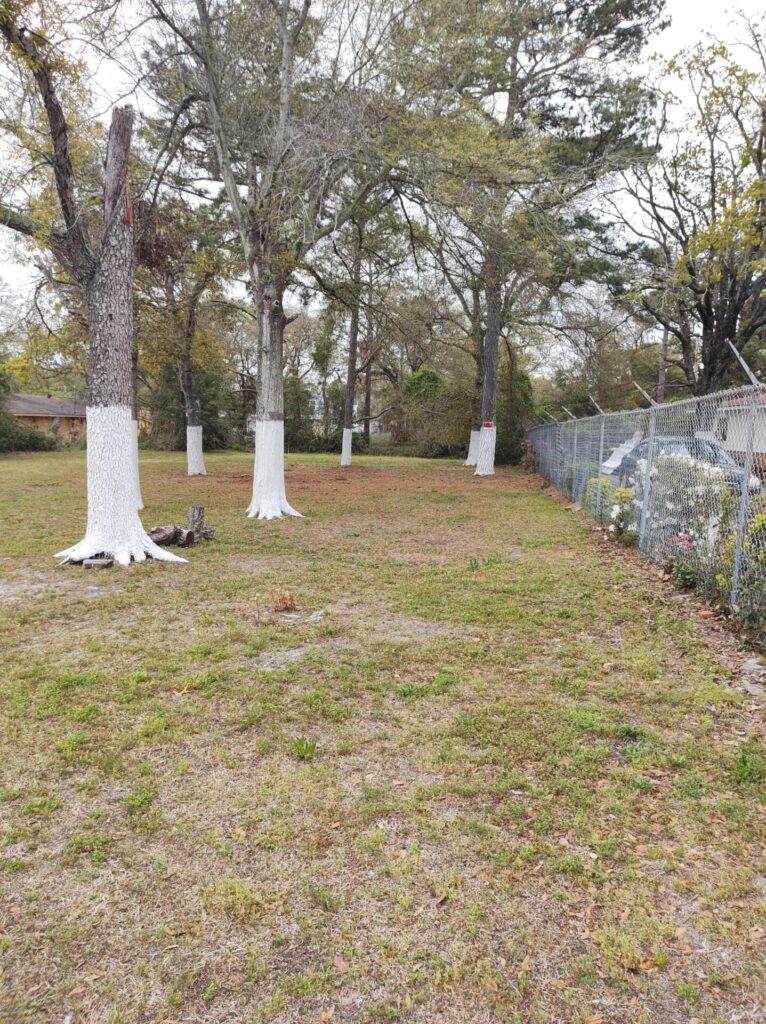
No, it isn’t because the tops are “harder to reach.”
When taking a stroll or driving by, you may have wondered why some trees are painted with strange markings, and some are painted white at the bottom. These markings and paint serve different purposes: the markings largely guide loggers, while the white paint protects the trees themselves.
What Do the Markings on Trees Mean?
The markings you see on trees—ranging from orange lines to red crosses and enigmatic Roman numerals—are used for various reasons in forestry management and logging. These aren’t the work of woodland creatures but serve practical purposes.

In the USA, the most common markings are orange stripes. These marks indicate trees that are due to be harvested and used for timber. Blue markings, on the other hand, often signify the edge of a boundary. These visual aids help loggers and tree surgeons identify which trees are designated for timber, and they assist forest managers in monitoring logging activity.
“Stump paint is used to help foresters confirm that trees were properly harvested. Stumps without paint raise a red flag, especially if there are too many,” Michigan State University Extension Forestry explains. “Sometimes, an adjacent unmarked tree needs to be cut in order to get at a marked tree. Foresters take this into account when marking a stand but sometimes leave access a bit tough for a logger.”

Image credit: Brittx/Shutterstock.com
In cases where a large area of forest is to be cut down, trees to be left alone might be marked, sometimes in a blue-green color, or a boundary might be marked in yellow.
In the UK, Roman numerals are used on trees that have been measured for their height. “These are called volume sample trees,” Forestry England explains. “These trees are important for estimating the total volume, and are marked using Roman numerals to identify them.”
Other trees might be marked with letters like “PL” to indicate their proximity to a power line, which needs to be shut off before the tree is felled. Red crosses are another common indication that a tree is to be cut down. Trees that are not intended for timber but are diseased might be marked similarly.

Why Some Trees Are Painted White at the Bottom
When trees are painted white at the bottom, it isn’t a sign for loggers but rather a method to prevent damage to the tree during variable winter temperatures.
“Sunscald is a winter occurrence, more common on young fruit trees such as apple, pear, cherry plum, cherry, apricot, and plum,” the University of Saskatchewan explains. “The south sides of the tree are usually affected because of sun reflected by the snow, which warms the frozen bark and causes it to thaw too quickly. This will cause the bark to crack, which, in severe cases, can lead to structural damage to the tree.”

As trees mature, they develop thicker bark, making them more resistant to sunscald. However, in their younger years, people protect trees by painting the base white. This white paint reflects more light, preventing the tree from overheating and thus protecting it from sunscald damage.

Leave a Reply